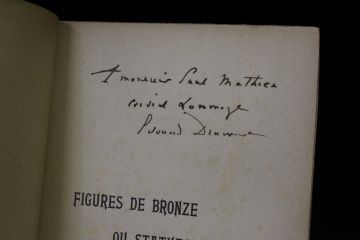Librairie Le Feu Follet - Paris - +33 (0)1 56 08 08 85 - Contact us - 31 Rue Henri Barbusse, 75005 Paris
Antique books - Bibliophily - Art works

Sell - Valuation - Buy



- Suggestions
- Search

Paul ELUARD
Les malheurs des immortels révélés par [...]
7 800 €

Jacques de VORAGINE
La légende dorée
4 500 €

Scévole de SAINTE-MARTHE
Les Oeuvres de Scevole de Sainte Marthe
10 000 €

André MALRAUX
La condition humaine
6 800 €

MOLIERE
Les Oeuvres de Monsieur de Molière
15 000 €
Search among 31106 rare books :
first editions, antique books from the incunable to the 18th century, modern books









 Add to my virtual collection
Add to my virtual collection 







